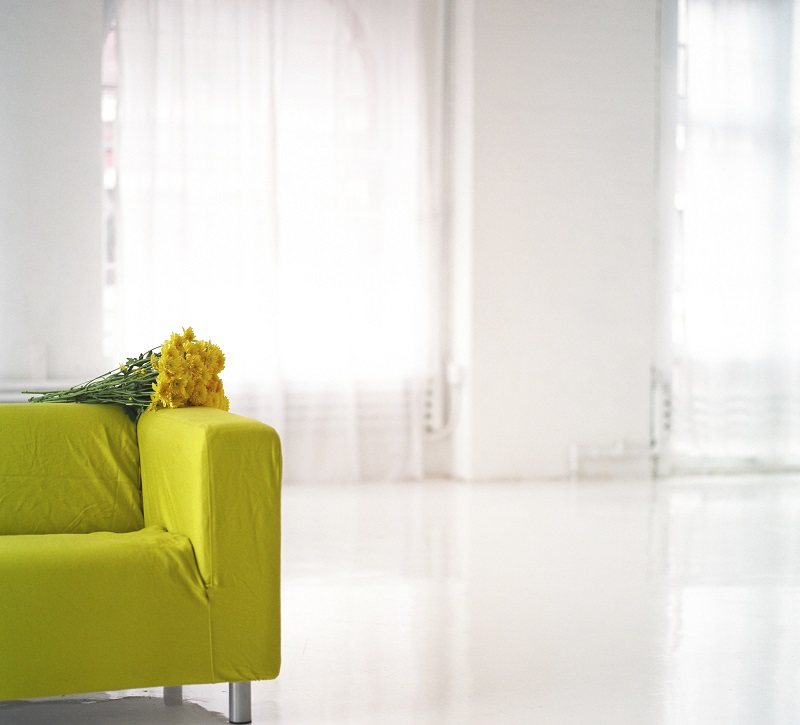Heat gain

|
[edit] Introduction
Heat gain is the term given to a temperature rise within a space due to heat from the sun (solar radiation), heat from surfaces (long wave infrared radiation), heat originating from other sources within the space (such as heating appliances, ovens, people, mechanical systems, lights and computers) and so on. It is the heat that is gained from such sources that changes the prevailing temperature within the space.
Heat gain can be positive, for example providing 'free' heating to spaces on sunny but cold days, or it can be negative, overheating spaces in the summer so that they are uncomfortable to occupy.
[edit] Contributory factors
A south-facing conservatory, for instance, in an uninhabited house may see considerable solar heat gains on a daily basis, particularly in summer, but no heat gains from heating appliances and people. In contrast, a north-facing room in winter may receive very little solar heat gains but be warmed by considerable heat from central heating, lights and people. Generally, excessive heat gains will create overheating which may have to be tempered by opening a door or window or activating the cooling systems.
In calculating the heat gain within a property, for instance when sizing an air conditioning system, engineers must assess the orientation of the building, the nature of its construction, size and location of windows, type of occupation and so on.
Various features can be used to limit solar heat gain, including:
- Shading systems.
- Limiting the number or area of openings.
- Orientating openings away from the sun path.
- Reducing solar transmittance through openings, for example, by reflective glazing.
- Ventilation.
- Insulating the building envelope to prevent the transmission of indirect solar gains (ie through external walls).
- Reducing the solar absorptance of the building envelope (eg white-coloured surfaces can reduce heat transfer into buildings).
- Reducing the urban heat-island effect.
- Planting to provide shading and to reduce the solar absorption of roofs.
In an office environment, calculating the mechanical cooling required will have to consider the plethora of plug-in devices such as computers, monitors, photocopiers, projectors, electric kettles and microwaves and so on. The heat load from this sort of equipment (‘plug loads’) has been estimated by ASHRAE (American Society of Heating, Refrigerating and Air Conditioning Engineers) as constituting between 20-50% of the energy used by a building.
The opposite of heat gain is heat loss, which is the heat that is lost through the fabric of the building when the external air temperature is lower than inside the building. The heat is lost through the external walls, floors and roof, and through inefficient doors and windows and other openings. A similar process may be seen in adjacent apartments, where heat transfer will occur in winter through the party walls from one that is heated to an adjacent apartment that has been left unheated.
Part L of the building regulations, 'Conservation of fuel and power', sets liminting parameters on the construction of buildings, their airtightness, the amount of glazing, insulation, power consumption and so on to limit unwanted heat gains.
[edit] Related articles on Designing Buildings Wiki
Featured articles and news
RTPI leader to become new CIOB Chief Executive Officer
Dr Victoria Hills MRTPI, FICE to take over after Caroline Gumble’s departure.
Social and affordable housing, a long term plan for delivery
The “Delivering a Decade of Renewal for Social and Affordable Housing” strategy sets out future path.
A change to adoptive architecture
Effects of global weather warming on architectural detailing, material choice and human interaction.
The proposed publicly owned and backed subsidiary of Homes England, to facilitate new homes.
How big is the problem and what can we do to mitigate the effects?
Overheating guidance and tools for building designers
A number of cool guides to help with the heat.
The UK's Modern Industrial Strategy: A 10 year plan
Previous consultation criticism, current key elements and general support with some persisting reservations.
Building Safety Regulator reforms
New roles, new staff and a new fast track service pave the way for a single construction regulator.
Architectural Technologist CPDs and Communications
CIAT CPD… and how you can do it!
Cooling centres and cool spaces
Managing extreme heat in cities by directing the public to places for heat stress relief and water sources.
Winter gardens: A brief history and warm variations
Extending the season with glass in different forms and terms.
Restoring Great Yarmouth's Winter Gardens
Transforming one of the least sustainable constructions imaginable.
Construction Skills Mission Board launch sector drive
Newly formed government and industry collaboration set strategy for recruiting an additional 100,000 construction workers a year.
New Architects Code comes into effect in September 2025
ARB Architects Code of Conduct and Practice available with ongoing consultation regarding guidance.
Welsh Skills Body (Medr) launches ambitious plan
The new skills body brings together funding and regulation of tertiary education and research for the devolved nation.
Paul Gandy FCIOB announced as next CIOB President
Former Tilbury Douglas CEO takes helm.
UK Infrastructure: A 10 Year Strategy. In brief with reactions
With the National Infrastructure and Service Transformation Authority (NISTA).






















